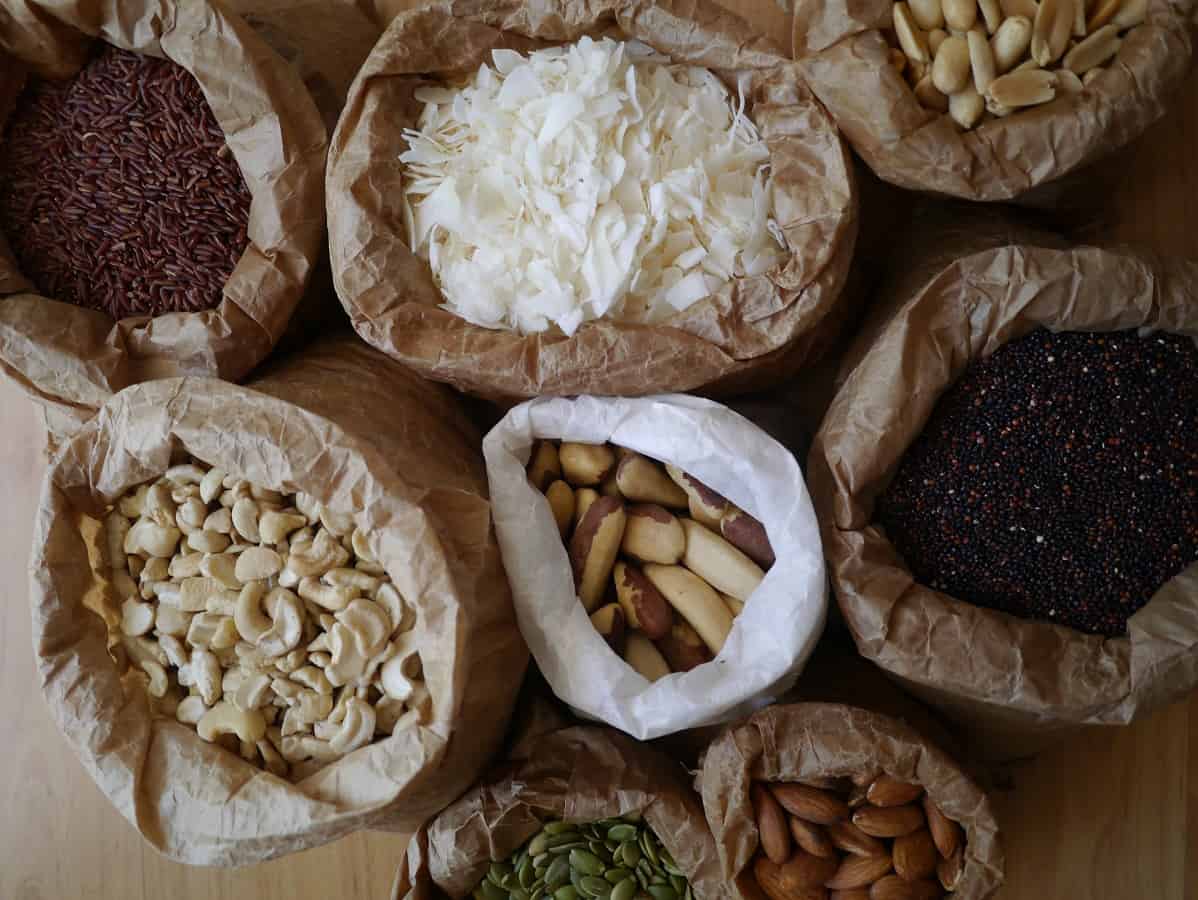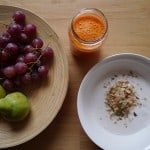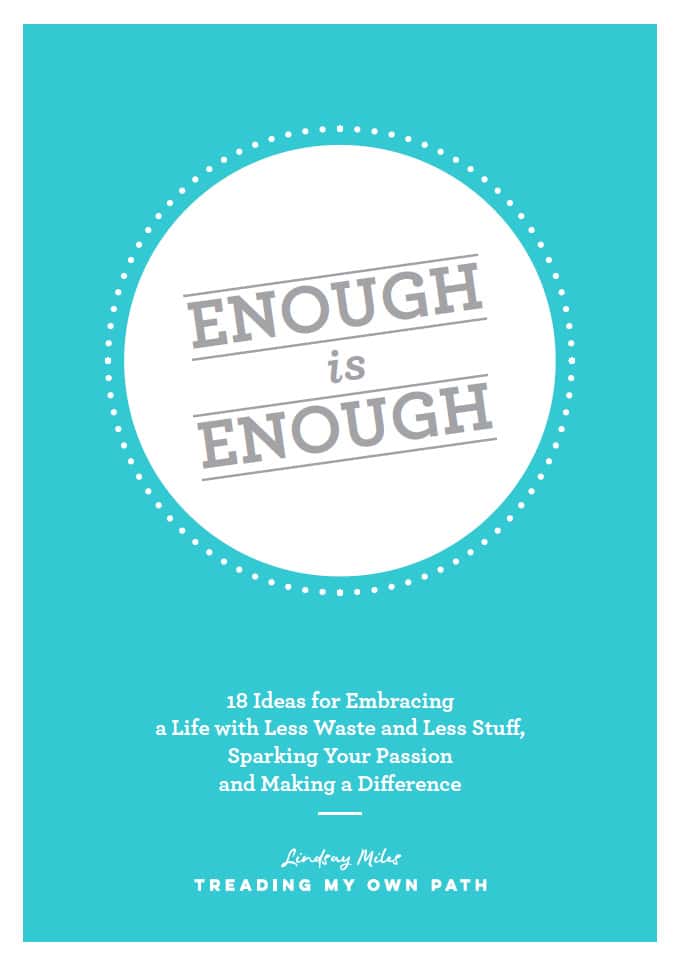The sustainable, ethical, natural way to eat – the ‘clean’ approach
Have you ever heard of clean eating? No? I hadn’t until I started preparing for the Living Smart session I presented on Healthy Homes, Healthy You back in November.
Food is one of my passions, and I wanted to cover a range of things: eating natural, whole foods; the importance of organic; shopping locally at farmers’ markets; avoiding packaged products filled with preservatives; the evils of mass-produced processed foods – low or no nutrition, fake ingredients that our bodies can’t recognise; and the huge unethical corporations we support when we buy the brands they own (and the 10 biggest companies own almost all of the everyday brands we that buy).
This is the way I eat, although it was a transition that didn’t happen overnight. As I’ve said so many times, it started with Plastic Free July – cutting out plastic meant cutting out junk, buying more raw ingredients and making more from scratch. I began to seek out organics and shop at farmers markets as I became more committed to sustainability. I also started taking a lot more interest in my health. Whereas in my twenties I could eat anything and everything and get away with it, my thirties have not been so forgiving, and my digestive system no longer appreciates being bombarded with junk. I have found that a simple approach to food is the answer. Eating fresh, nutritious, healthy food every day actually makes me feel good – and tastes delicious.
Until I started my research though, I’d never thought about a way to describe my way of eating, other than plastic-free, which doesn’t quite do it justice. Or maybe whole foods (meaning food as close to its natural state as possible), but that doesn’t cover the ethical aspects. “Plant-based” doesn’t fit because whilst I eat a lot of plants, I also eat eggs and fish. Then I stumbled across the term “clean eating”, and I realised, there was a word that described how I eat after all, and so perfectly.
Clean Eating – What does it mean?
It’s actually quite simple. There are plenty of people out there who have dreamed up complicated rules for clean eating, saying all kinds of things like: you shouldn’t eat after 6pm; you shouldn’t eat gluten, or any grains, or even things that look like grains but actually aren’t; or you should only eat by the light of the moon (okay, I made that one up – but you get the idea). I think such rules are unnecessary. Why make things complicated? The way I see it, there’s just one guideline:
“If it came from a plant, eat it. If it was made in a plant, don’t.” ~Michael Pollan
So simple!
Of course, it can’t be taken completely literally. There are plants that are poisonous. Fish, meat and eggs may not be plants but that doesn’t mean they are bad for us. Following this rule doesn’t mean we all have to turn vegan. It’s more about understanding where our food comes from. Free range chickens that roam around in grassy meadows in small-scale farms are very different from battery chickens that have never seen daylight and are forced to live in confined, unhealthy conditions before being processed – in factories.
To me, clean eating encompasses a few things. Eating organic, and buying as local as possible. Shopping directly with producers and cutting out the middle-man (by which I mean, the supermarkets). Using ingredients that are as close to their natural state as possible. Cooking from scratch. Choosing the best quality ingredients I can afford. Avoiding anything with preservatives, additives, or containing ingredients that I haven’t heard of or can’t pronounce. Choosing free range and fair trade (food produced by workers who are exploited can hardly be called ‘clean’).
Food is so important – we literally can’t live without it. Our food needs to be real in order to nourish us and keep us healthy. It needs to be grown in ways that are sustainable so that the land (and waterways) will continue to feed us for generations to come. And it needs to be grown the way nature intended. Not pumped with chemicals and drugs, or fed inappropriate feed (jellybeans, anyone?). Or worse – synthetically manufactured in a laboratory from man-made “ingredients” so it looks and tastes like food but is devoid of any actual nutrition. The only thing healthy about this is the profit that these companies generate for themselves.
“I prefer butter to margarine because I trust cows more than chemists.” ~Joan Gussow
[leadpages_leadbox leadbox_id=1429a0746639c5] [/leadpages_leadbox]














Love this – exactly my philosophy. It feels so much more rewarding and nutritious knowing where your food has come from and that you are attributable for the end product when making things from scratch.
That is so true. I wish more people would learn to cook – it’s so much fun but also I think people only really understand what they’re eating and where our food comes from once they cook for themselves. I made turkish delight once as a gift and I was horrified by what it was made from – cornflour, water, gelatine, refined sugar and colouring, yuck! Now I know what’s in it, I will never make it again – I would never want to give anyone something so completely and utterly un-nutritious!
Wonderful post! Because I am educated in anatomy, two year massage therapy school, I am way more aware of what I consume.
Understanding the body and what we need to keep everything working properly definitely helps as make better food choices!
Yes indeed! I follow the Dirty Dozen and Clean Fifteen rule of thumb.
Great post! I have been improving my diet over the last few years, but this has really motivated me to stick with it. Those nut and seed bars look amazing, recipe??? ☺
Thanks. That recipe is a work in progress so I don’t have the recipe – currently it needs coconut oil to bind it together which means it has to be kept refrigerated, which is quite frustrating for a nut/seed bar! it’s the kind of thing I want to take out with me as an emergency snack, not scoff straight from the fridge! Most of the other recipes I have posted on the blog though…
Beautifully written post! I’ve been on a similar journey with changing my consumption habits (both food & stuff). You’re right, it does not happen overnight! It is a process of unlearning old behaviors, & recreating new healthy, “clean,” & sustainable ones. Tempting photos, btw. Recipes? Yes, please!
Perfectly put! Unlearning – yes, that’s totally it, and it does take time.
I have some of the recipes on the blog:
Quinoa salad – no recipe, just leftovers from my fridge
Sourdough – https://treadingmyownpath.com/2013/04/24/baking-sourdough-bread-2/
Cacao banana smoothie – https://treadingmyownpath.com/2013/06/10/recipe-cacao-banana-smoothie/
Hummus – https://treadingmyownpath.com/2013/05/24/homemade-hummus-and-tzatziki/
Nut butter cups – https://treadingmyownpath.com/2013/06/22/raw-chocolate-nut-butter-cups/
Chocolate mousse – https://treadingmyownpath.com/2013/07/19/awesome-rawsome-chocolate-mousse/
Pocket pies – this is a Jude Blereau recipe (be warned it is very time consuming!) http://www.recipecommunity.com.au/node/76138
Seed/nut bar – no recipe (a work in progress, I will post once i’m happy with it!)
Quinoa salad – another leftovers ensemble
Hope that helps!
Ohmygod thank you for these
Have fun in the kitchen! : )
Hi Lindsay!
I really enjoyed your article. I heard this expression recently on LBC radio in the UK and thought I would share it here: “Don’t buy any food items in the shops that contain more than one ingredient!” So true :)
Thanks Anna! Yes, that is a great rule : ) Simple is best!
I totally agree with this philosophy I just wish it was cheaper to put into practice
I find it cheaper now – I’ve cut out all the processed stuff that costs a lot but doesn’t really add much to your meals or even fill you up – empty calories are expensive! Shopping around, buying in bulk, learning which subs to make to keep costs down – keep at it and you’ll get there! : )